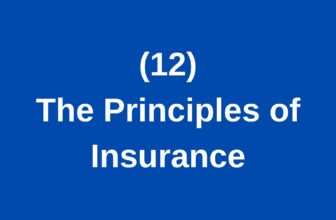11. Understanding the Classifications of Risk in Insurance (FREE COURSE)
Introduction
Hello everyone, and welcome to Chapter 10 of this course, where we delve into the Classifications of Risk. In previous chapters, we explored various examples and types of risk. It’s crucial to understand that not all risks are insurable. This chapter focuses on the classification of risks, which helps determine whether a risk can be insured. We will discuss insurable and non-insurable risks in more detail in the next course, Fundamentals of Insurance. As insurance professionals, it’s essential to answer clients’ questions about whether specific risks can be insured based on their classification.
Financial and Non-Financial Risks
Financial Risks
From the name itself, financial risks are related to money. These are risks that can be measured in monetary terms, meaning they have a specific value. For example, losing a cell phone is a financial risk because the phone has a monetary value, and you need money to replace it. Financial risks include:
- Material damage to property due to fire.
- Damage to a ship from a cyclone.
- Motor car damage from a road accident.
- Theft of property, such as a motorcycle, machinery, or household items.
- Loss of profit due to fire damage to business property.
These types of risks can be insured because insurance companies can evaluate the loss in monetary terms.
Non-Financial Risks
Non-financial risks cannot be measured in monetary terms. They involve items or situations that hold sentimental value or personal preferences, which cannot be quantified. Examples include:
- A family heirloom with sentimental value, like a wedding ring or a medal, which cannot be replaced for its emotional worth.
- Personal choices, such as the brand and color of a car or the selection of a restaurant menu.
These types of risks are not insurable because they cannot be evaluated in money terms.
Pure and Speculative Risks
Pure Risks
Pure risks are those where the outcome results in a loss only. There is no chance of profit. Examples include:
- Fire damage to a factory building.
- Machinery breakdown.
- Theft of properties.
These risks are insurable because the outcome is only loss, and there is no chance of profit.
Speculative Risks
Speculative risks involve scenarios where there is a chance of either loss or profit. Examples include:
- Share or stock investment, where the value might increase or decrease.
- Pricing of a product to remain competitive in the market.
- Fashion changes that could lead to a fall in product demand.
Speculative risks are non-insurable because they involve outcomes that are within our control, unlike pure risks which are beyond our control.
Fundamental and Particular Risks
Fundamental Risks
Fundamental risks affect a large group of people or a whole region and arise from causes beyond individual control. These risks can have catastrophic consequences. Examples include:
- Natural disasters like floods, cyclones, earthquakes, and tsunamis.
- Nuclear effects.
While some fundamental risks can be insured under specific conditions and special cases, generally, these are considered non-insurable.
Particular Risks
Particular risks arise from individual actions and are localized. Examples include:
- Fire, explosion, burglary, and housebreaking.
- Motor accidents, including death and bodily injuries.
- Industrial accidents and the collapse of bridges.
These risks are insurable because their effects are localized and can be evaluated.
Conclusion
To summarize, insurable risks include financial risks, pure risks, and particular risks. Non-insurable risks include non-financial risks, speculative risks, and fundamental risks. This classification is crucial for insurance professionals to determine whether a risk can be insured and under what terms.
If you have any questions about today’s class, please feel free to contact me. I am happy to answer your questions. Thank you for your attention, and see you in the next course!





